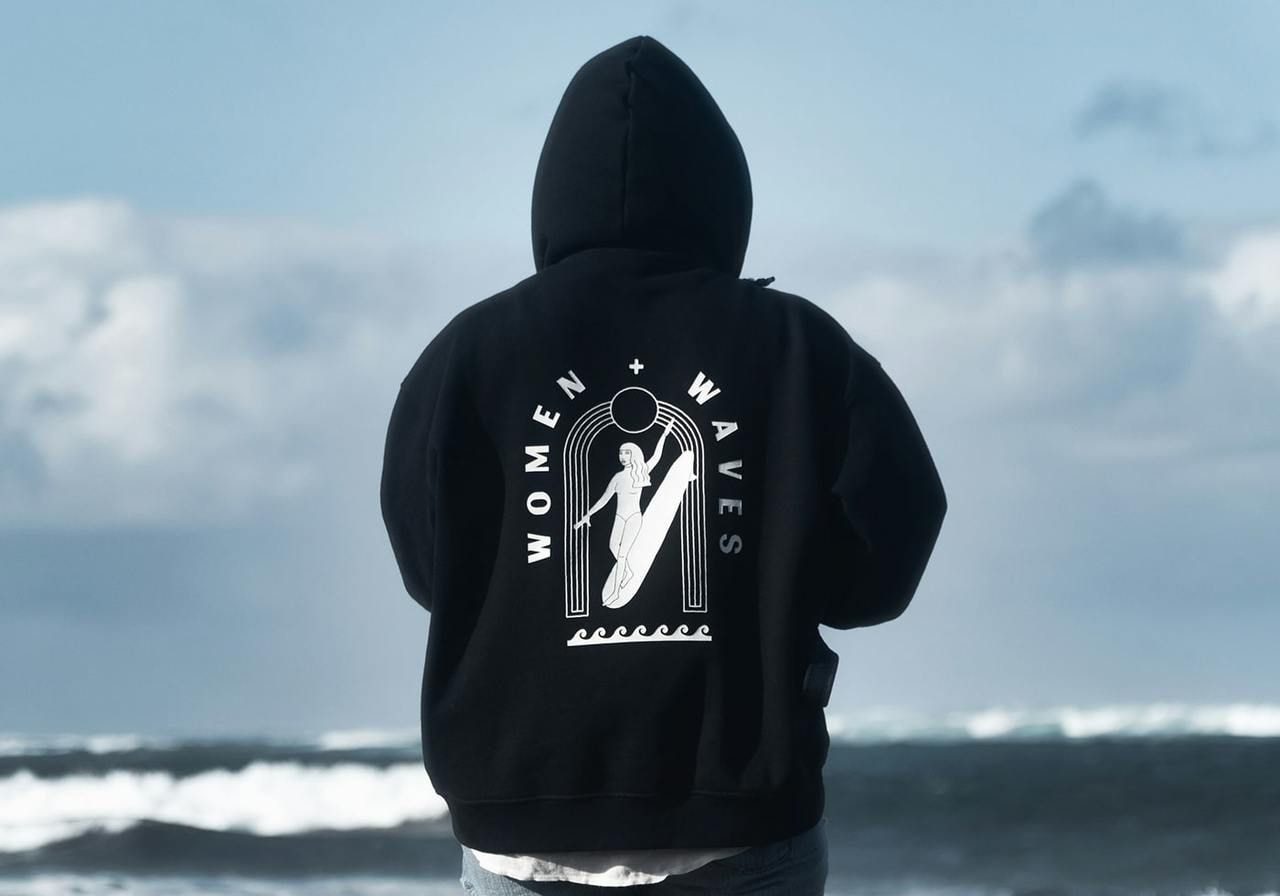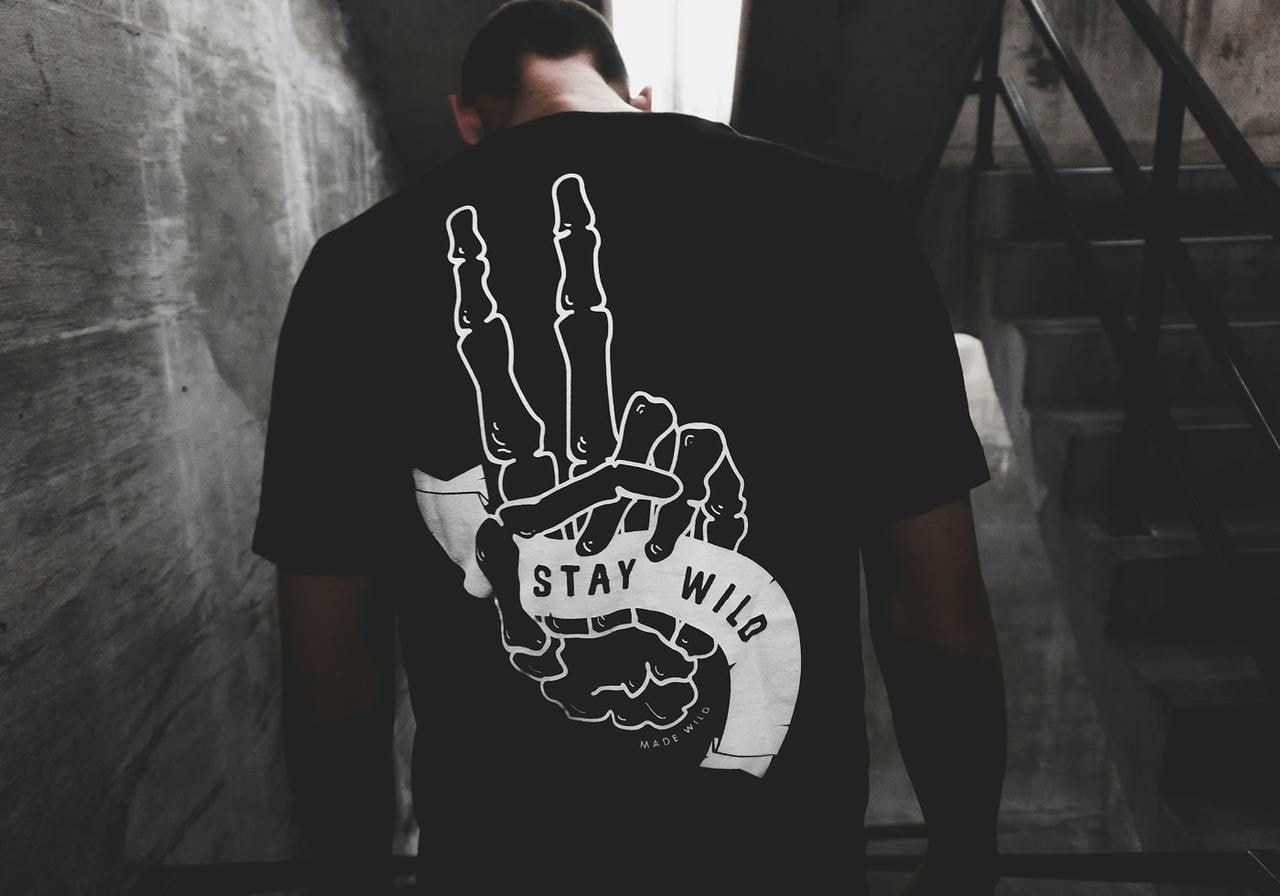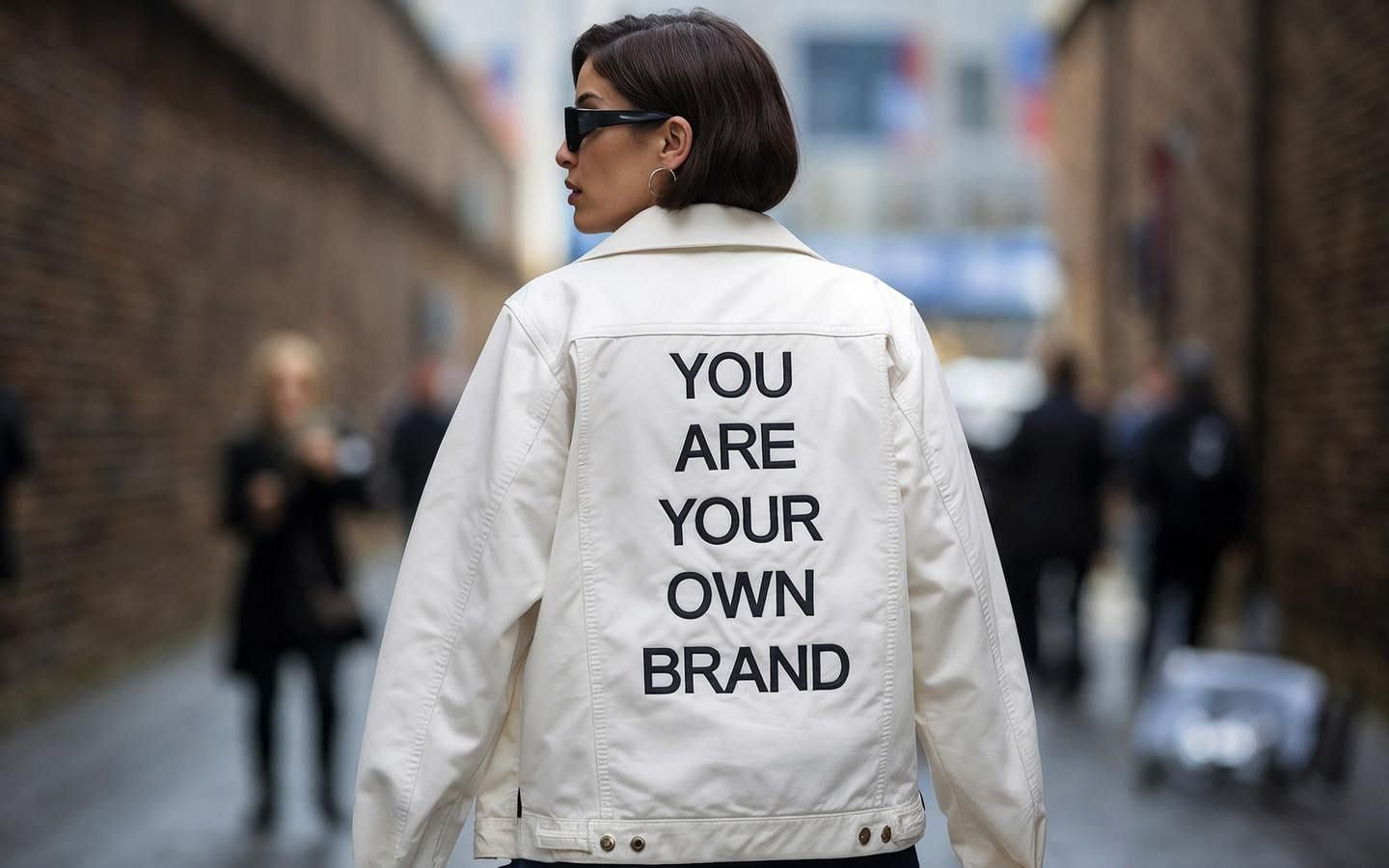Table of contents
Standing out online is tough. A strong personal brand is a key for creators, ecommerce sellers, and entrepreneurs who want to get noticed, build trust, and grow a business.
Your personal brand is more than a logo or tagline; it’s your skills, experiences, and true self presented across social media, your website, and beyond.
This guide explains what a personal brand is, why it’s important, and how to build one step-by-step. You’ll get practical advice, real-world examples, and creative tools to connect with your audience and stand out in 2026.
Main takeaways
A personal brand is the way you present your abilities, expertise, and personality to the world
Building a personal label helps you stand out, bond with your audience, and grow your business
Personal branding is a core strategy for content creators, ecommerce sellers, and solopreneurs in 2026
A strong brand is clear, authentic, and consistent across all platforms
Your unique value proposition and values shape how others perceive you
Sharing your life experiences and engaging on social media builds trust and credibility
With the right tools and strategies, you’ll establish a personal brand that drives visibility, reputation, and sales


What is a personal brand?
A personal brand is how you present yourself to the world—both online and offline. It describes how others perceive your abilities, experiences, values, and personality. Your personal label is formed by what you share, how you communicate, and your impression on others.
It’s more than just having a logo and a catchy tagline. It’s how you show up on social media, your website, at work, and in your daily interactions. It’s your story, messaging, and the unique perspective you bring.
The true power of personal branding goes beyond visibility—it builds trust. 69% of consumers trust influencer recommendations over traditional ads. This trust demonstrates the power of personal brands to influence purchasing decisions and build loyal communities.
Personal vs. corporate brand
A corporate brand represents a company, its products, and its mission. Think of big names like Nike or Apple, which prioritize sleek design, performance, and innovation. A personal brand, on the other hand, is built around an individual and shaped by their background, voice, and unique perspective.
For example, Emma Chamberlain built a strong personal brand as a relatable, down-to-earth creator. At the same time, her company, Chamberlain Coffee, operates as a corporate brand with its own distinct identity. Emma’s fan base first identifies with her genuine personality, which strengthens her reputation and makes them more likely to buy from her company.
Whether you realize it or not, you already have a personal brand. The question is, are you shaping it intentionally?
What makes a strong personal brand?

A strong personal brand has a clear, consistent, and personable identity that resonates with your audience.
Here are the key elements that set a personal brand apart:
-
Clarity: Know what you stand for, what you offer, and what makes you authentic. Your defining characteristics, values, and message should be easy to understand.
-
Consistency: Use the same tone, style, and messaging throughout your social media, website, and any other touchpoints. This strengthens your identity and fosters trust.
-
Authenticity: Be real. Share your experiences, ideas, and personality—not a polished front. That’s what builds a real connection.
-
Value: A strong brand helps your audience. Share valuable content, creative insights, or inspiration that addresses their needs and pain points.
-
Visual Identity: Use consistent colors, fonts, and imagery that feel true to you, and support your message at a glance.
-
Engagement: Don’t just post—connect. Reply to comments, join conversations, and build a community around what you believe in.
When you combine these elements, you develop a personal brand that’s unique, honest, and relatable to your people.
Common mistakes to avoid
-
Trying to please everyone: If you try to speak to everyone, you resonate with no one. Stay focused on your specific audience and what they value.
-
Copying others: Inspiration is great, but your brand should communicate your own narrative, knowledge, and taste. Don’t build your label by mimicking someone else’s.
-
Inconsistency: Shifting your tone, style, or message too often weakens your brand. Consistency builds recognition, trust, and connection.
Why is personal branding important?

Your personal brand is what stops people in their tracks. It’s how people decide whether to follow you, trust you, or buy from you. For content creators, ecommerce sellers, and entrepreneurs, a strong personal brand is often the difference between blending in and building a loyal following.
Here’s why personal branding is important in 2026:
-
It builds trust and credibility. People are more likely to interact with those they know, like, and trust.
-
It generates new opportunities for sales, collaborations, and speaking gigs.
-
It supports your career and business goals by attracting clients, expanding your crowd, and making an impact.
-
It gives you control over your reputation. Instead of letting others define you, you shape your own narrative.
-
It distinguishes you in the vast online market by sharing your unique perspective, life experiences, and values.
Bottom line: Your personal brand bonds you with your audience, expresses your authentic identity, and leaves a lasting impression in a crowded industry.
How to build a personal brand: 6 practical tips
Developing a personal identity requires intention, effort, and consistency. Let’s break it down:
Define your audience and values
Before you create content or launch a brand called you, decide who you want to reach and what you stand for.
-
Who is your target audience?
-
What values guide your work and content?
-
What special skills, knowledge, or perspective do you bring?
When you know your audience and values, you’ll create content that resonates and stay authentic and consistent. This foundation turns a generic presence into a personal brand that connects and builds trust.
Tip: To better understand audience interests and trending topics, use tools like Google Trends or social listening services like Brand24. Jot down a simple mission statement to stay focused as your brand grows.
Choose your visual and content identity

Your visual identity is the first impression you make. It includes colors, fonts, logo, and your overall aesthetic. A professional pic will also make a significant difference in how you present yourself on social media and your website.
Your content identity is just as important. It’s the tone of your posts, topics, and how you communicate your ideas. Your content should be genuine and relevant to your industry and preferred audience.
-
Do you want your tone to be formal, friendly, or bold?
-
Will you focus on sharing advice, stories, or inspiration?
-
Does your visual presentation reflect your message and goals?
Together, your visual and content identity form a consistent and recognizable personal brand.
Tip: Canva is an easy-to-use tool for designing visuals, whereas Grammarly helps you maintain a consistent tone throughout your content.
Launch branded products or merch

Branded products turn your personal label into a profitable business. With merch like t-shirts and mugs to digital products like templates or guides, you can share your message, grow your online following, and build multiple income streams.
-
Think about what products best reflect your brand’s design, values, and audience needs
-
Consider designs, slogans, or products that feel true to your character
-
Promote your merch across your social media platforms and website
A product line can strengthen your brand and convert followers into buyers.
Tip: Use print-on-demand services like Printful to design and sell products without upfront inventory. Start small, offering one or two signature products that reflect your brand’s identity.
Create consistent content
Your personal brand is built through your content. Consistency is key whether you’re on YouTube, TikTok, or writing a blog. Posting regularly builds your presence, helps you reach your specific audience, and keeps you top of mind.
-
Focus on topics that match your professional knowledge, values, and audience interests
-
Share useful recommendations, insights, and personal stories that reflect your authentic self
-
Use social media resources and schedulers to maintain a steady flow of content
Consistency isn’t just about frequency; it’s also about showing up in a way that aligns with your values and fosters trust over time.
Tip: To save time and stay visible everywhere, use tools like Later or Buffer to schedule posts across platforms and repurpose content (e.g., a blog post into a TikTok video).
Share stories and experiences
Your personal brand is based on your journey, including your wins, fails, and lessons learned. Sharing true stories makes your brand more relatable and human. It also demonstrates professional knowledge, experience, and authenticity—key elements of Google’s E-E-A-T (Experience, Expertise, Authoritativeness, and Trustworthiness) framework for content creators.
-
Share how you overcame challenges, expanded your knowledge, or helped clients solve problems
-
Include real-life examples that show your professional expertise in action
-
Let your audience see the person behind the brand; this is how you connect and stand out
By sharing your journey, you transform your brand into more than just a name; you create a story others want to follow.
Tip: Use your stories to teach, not just entertain. For example, instead of just posting “I hit 10,000 followers,” explain how you did it and what you learned. This increases your credibility and positions you as an expert.
Be active on social media and engage directly

Your personal brand grows through interaction, not in a vacuum. Engaging directly with your audience on social networks is essential for developing relationships, earning trust, and staying visible.
-
Respond to comments, answer questions, and join discussions in your industry
-
Use social media apps to keep track of messages and mentions
-
Follow other creators and brands in your industry; supporting others builds community
A personal brand is about more than just self-promotion; it’s about establishing a two-way relationship. A consistent and authentic presence in your community will keep your audience coming back.
Each platform has its own rhythm. On TikTok, that might mean jumping into trends or duets. On LinkedIn, it’s thoughtful comments and professional insights. Match your engagement to the platform—and your audience.
Tip: Set 15–20 minutes a day aside to connect. Ask questions in your posts to spark conversation, and use polls, life stories, and direct messages to engage more personally.


Tools to support your personal brand

Building your own personal brand is much easier when you use the right tools. Here are some essentials that’ll help you stay organized, reach your preferred audience, and grow your presence:
-
Social media platforms: Platforms like TikTok, Instagram, YouTube, and LinkedIn each offer different strengths. TikTok’s great for short, viral content and connecting with Gen Z, whereas Instagram is better for polished visuals and curated posts. YouTube is ideal for long-form videos and building authority, whereas LinkedIn focuses on professional networks. Choose platforms that align with your audience and content design.
-
Website or blog: Your own site is your online home. It’s where you control your story, showcase your work, and share your professional pic, core values, and defining attributes.
-
Print-on-demand merchandise: Launching branded products like t-shirts, mugs, or stickers helps you turn your audience into customers. Use platforms like Printful’s print-on-demand services to create merch without upfront costs.
-
Social media tools: Schedulers such as Buffer or Hootsuite help you post consistently, while analytics tools help you track engagement and fine-tune your strategy.
-
Content creation tools: Apps like Canva, CapCut, or Descript make it simple to produce visuals, videos, and written content that align with your personal label.
-
Email marketing platforms: Tools such as Mailchimp and Flodesk allow you to communicate with your audience via email newsletters, promote your products, and build relationships outside of social media.
-
Community platforms: Environments like Discord and Circle build an engaged online crowd around your brand. They’re great for carving out private spaces to interact with your followers more directly, offer exclusive content, or host events.
These tools help you develop high-quality content, engage with your supporters, and manage your brand more effectively, leaving more time to focus on your message and the meaning behind it.
Example of a successfully created personal brand

Gary Vaynerchuk (GaryVee) is one of the best examples of a personal brand done right. He’s a marketing expert, entrepreneur, and speaker. Gary’s built a global following by sharing his authentic self, practical advice, and life lessons via social media, podcasts, books, and public speaking events.
Gary’s personal brand success relies on 4 key elements:
-
A clear, unique value proposition: He teaches people how to grow their business, build their brand, and harness the power of social media.
-
Consistent content across channels: Daily videos, posts, podcasts, and blog updates that all reflect his signature style of being direct, practical, and no-nonsense.
-
A focus on community and engagement: He actively responds to comments, answers questions, and shares stories that resonate with his audience.
-
A strong visual identity: Everything feels aligned and recognizable from his videos to social posts.
Gary Vaynerchuk’s approach mirrors the framework we outlined before—he defines his values, shows up with a strong voice, and creates consistent, value-driven content.
He demonstrates how a personal brand helps you build a huge following, expand career opportunities, and make an impact across industries.
Conclusion
Your personal brand is the key to standing out, building trust, and uncovering new opportunities in a noisy online space. We’ve explored what a personal brand is, why it matters, and how to build one step by step:
1. Define your audience
2. Provide content
3. Launch products
4. Engage with your followers online
Whether you’re a creator, an ecommerce seller, or an entrepreneur, a personal brand helps you connect with your audience, show your true self, and grow your business in an authentic way.
Start shaping your personal brand today, because your story, voice, and perspective deserve to be heard.
FAQ
A personal brand is the unique image, message, and identity you share with the world, both online and offline. How you communicate your abilities, values, and personality influences how others perceive and remember you.
For example, if you post design advice, share behind-the-scenes insights from your creative process, and engage openly with your followers, your audience will associate you with design expertise and authentic storytelling. A strong personal brand will help you attract the right clients, followers, or career opportunities.
Yes, personal branding is absolutely a skill. Like any skill, you learn and refine it with practice. Building a brand involves mastering communication, visual storytelling, and understanding your audience.
Personal branding also involves knowledge of various tools. For example, Canva helps you create eye-catching graphics, whereas Grammarly ensures your writing is clear and polished.
Studying the success stories of social media influencers or creators in your niche helps you generate ideas for your own brand creation process. With time, you’ll get better at sharing your message and growing your audience.
Start by defining your foundational values, audience, and unique personal strengths. Then create a visual identity (colors, fonts, professional photos) and share content reflecting your professional expertise. For example, if you’re a fitness coach, post workout instructions, success stories, and motivational quotes across your social media.
Clarity, consistency, and authenticity are the key components. Know your message, use a consistent tone and visual language, and express your true personality. A personal brand grows stronger when you engage with your audience, share value-driven content, and build trust over time. Explore platforms like Buffer or Hootsuite that can help you stay consistent.

Printful is an on-demand printing and fulfillment service that helps businesses create and ship custom products.





